Collecting rare Canadian coins is a fascinating hobby that anyone can take part in. Various factors come into play and affect Canadian coin values. When an item is very rare, and in the best condition, it will be extremely valuable.
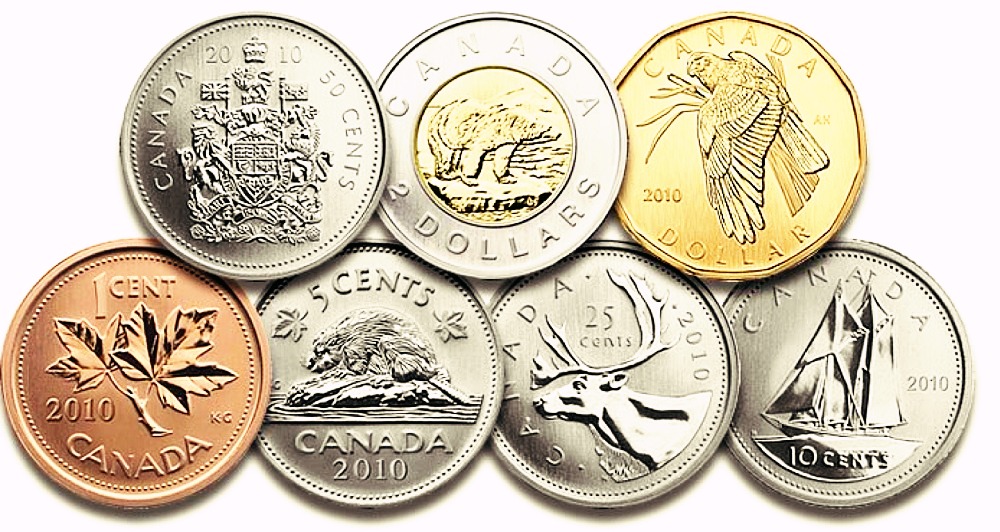
They also tell something about Canada’s exciting history. For more information about the different types of Canadian coins and what makes them unique, continue reading.
Top 10 collectible Canadian coins
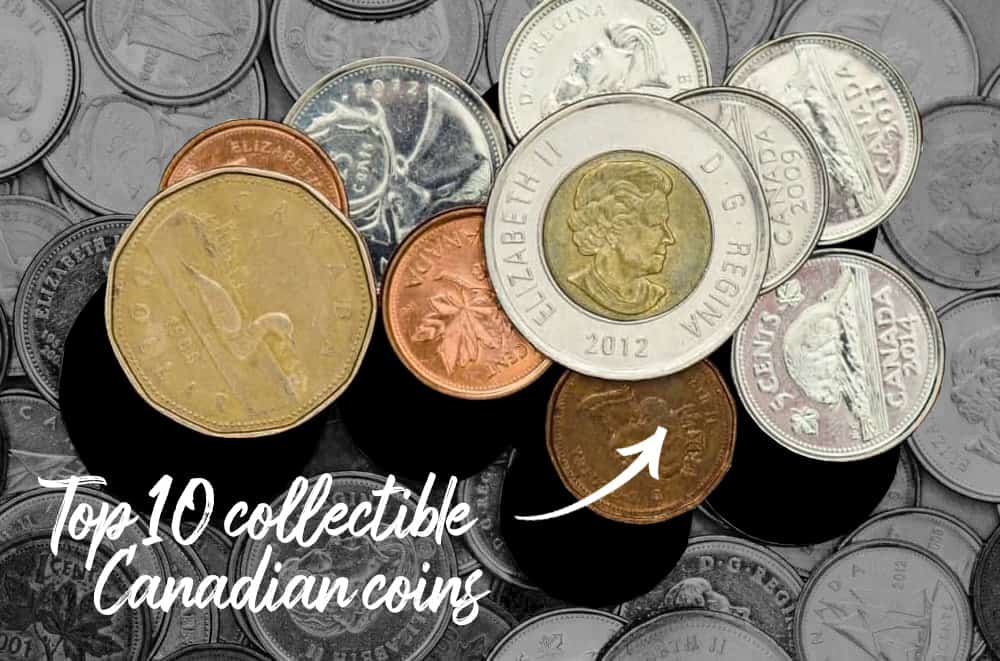
1906 Small Crown
Experts believe that manufacturers used a single crown die to strike around 100 examples before replacing it with a larger die.
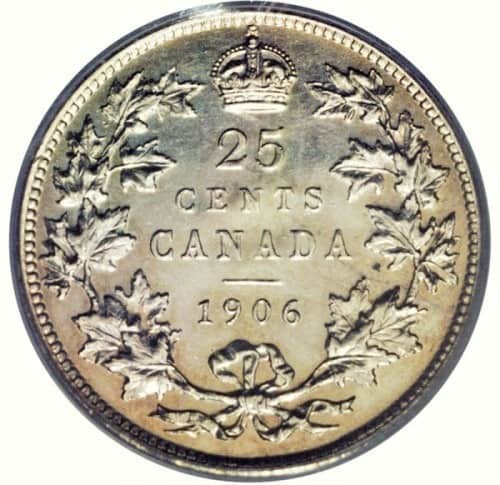
It makes the 1906 small crown a rare find and the most unique of all Canadian quarters. These examples are mainly in low-grade conditions, with heavily eroded features. They may often sell for more than $1,000. There is a lower amount of examples that are above ‘very good’ condition. These may sell for as much as $50,000.
Bank of Canada Silver Dollar
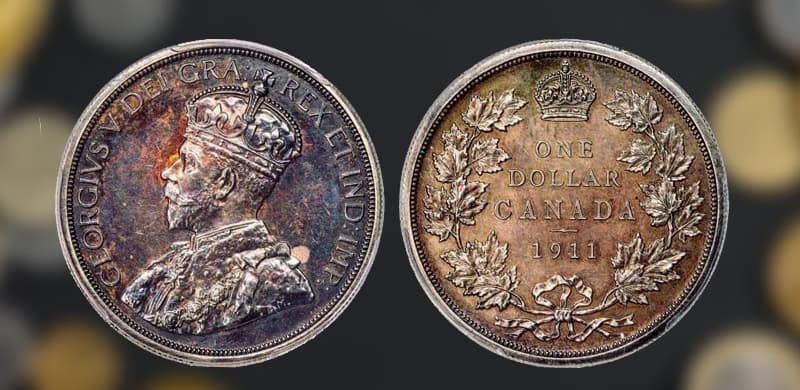
The nickname of this is ‘Emperor‘ and ‘Holy Grail‘. It is extremely rare as only pattern pieces existed, which were not meant for circulation. In 1965 it held a world record for being the world’s most valuable coin. It is also the rarest in the country. There are only three 1911 pattern dollars, two of which were in silver and one in bronze. The bronze and one silver 1911 pattern dollar are at the Canadian Currency Museum in Ottawa. In 2003, the other 1911 silver dollar sold at auction for just over 1 million dollars.
1916 C-Gold Sovereign
Between the years 1908 and 1919, the Ottawa Royal Canadian Mint struck the one pound gold coin.
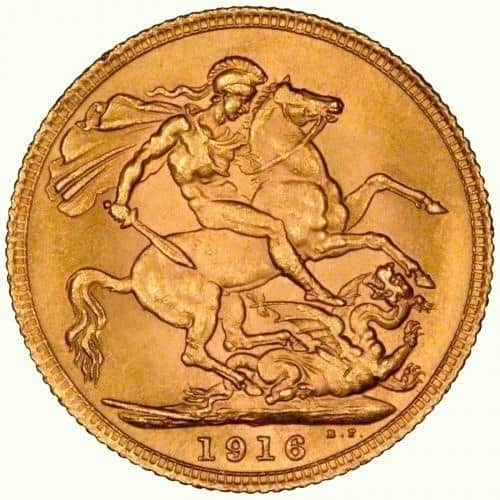
Due to ties with Britain, the mint needed to produce sovereigns by order. However, this required special requests for different commercial purposes, so not many pieces were ever made. In 1908, only pattern pieces were struck. They are identical to British sovereigns, except for a ‘C’ mintmark to denote the country of production. Sovereigns struck in 1916 are the rarest and commonly reach up to $50,000 at auction.
1921 50-Cent
It has been known as the ‘King of Canadian Coins‘. Although the mint produced only 206,398, and due to low demand, the government decided to melt them down.
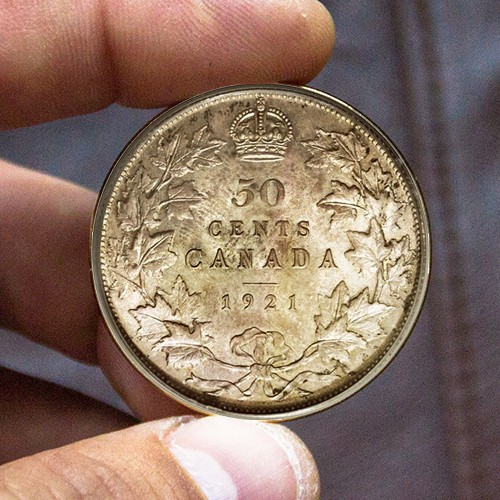
Experts believe that fewer than 200 now exist. 50 cent pieces varied in popularity since their introduction in 1870. But in 1920, the government announced the Canadian coin standard would fall from 92.5 percent to 80 percent silver content. This caused demand to fall. The current value can depend on various factors, such as quality, wear and finish, but they can sell at auctions for up to two hundred thousand.
1921 5-Cent
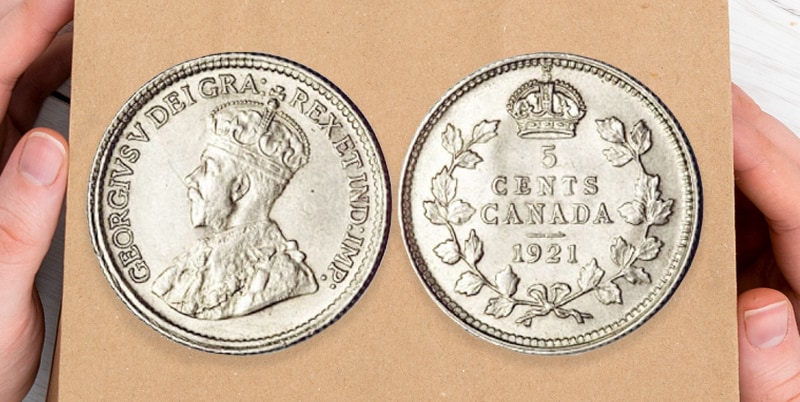
In 1921, the Royal Canadian Mint made plans to bring in a 5-cent piece made of nickel for the next year. To prepare for the launch, they melted down all of the existing silver 5-cent pieces. Most of these were minted in 1921. The examples that survive are from business strikes and specimen sets sold to visitors to the Canadian mint in the same year. There are currently fewer than 400 of these in existence. These come in different grades, and they may fetch anything between $4,000 and $100,000.
1936 “Dot” 10-Cent
This is a scarce Canadian dime, and there are only five examples that are currently in Canada. Historical changes give items of unique currency differences.
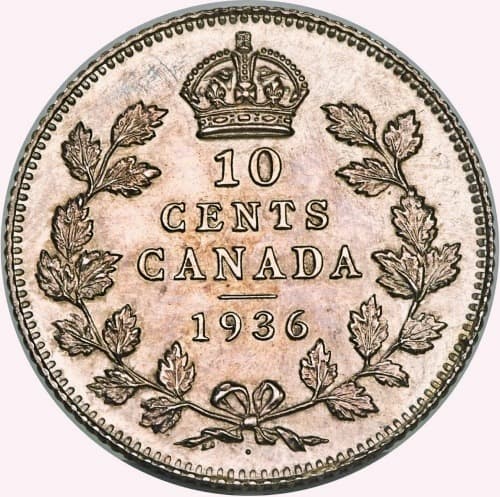
Edward VIII became king in 1936 but was succeeded by his brother, George VI, within a year. Before new coins could be minted, there were shortages of one, ten and twenty-five Canadian cents. In 1937, the government issued coins dated 1936 and with George V’s likeness. There was a dot on the reverse side to distinguish these 10-cents pieces, although they were not put into circulation. One example of these sold at auction in 2010 for more than $150,000.
1948 Canada Silver Dollar
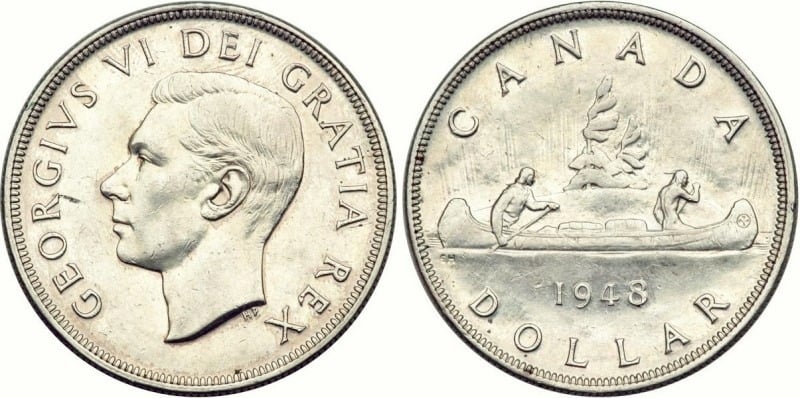
Another rare and collectable item that has historical significance. The silver dollar was changed in 1948 due to the independence of India in the previous year. It meant the Latin words ‘ET IND: IMP‘ (And Emperor of India) needed to be removed from the obverse legend. The reverse design remained unchanged. These are rare, with only 18,870 pieces initially minted. They are commonly sold at auctions across the country at prices that reflect their condition. In 2009, one example sold for $67,850.
1969 Large Date 10-Cents
This 1969 10-cent coin is the result of an error, where a large date was used in place of a small date.
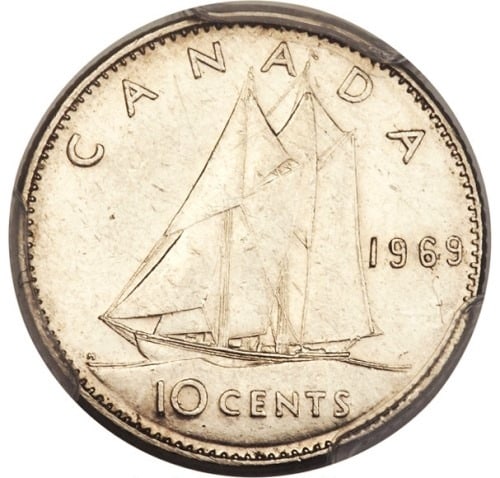
This glitch went unnoticed, and the irregular pieces went into the mix. On the front, the picture shows a sailing boat with a significant date to the left side. On the reverse is Queen Elizabeth II. There are only around 20 known examples, but there may be more still in circulation. Depending on the condition, these may fetch anything between $10,000 and $25,000 at auction.
1987 Loon dollar
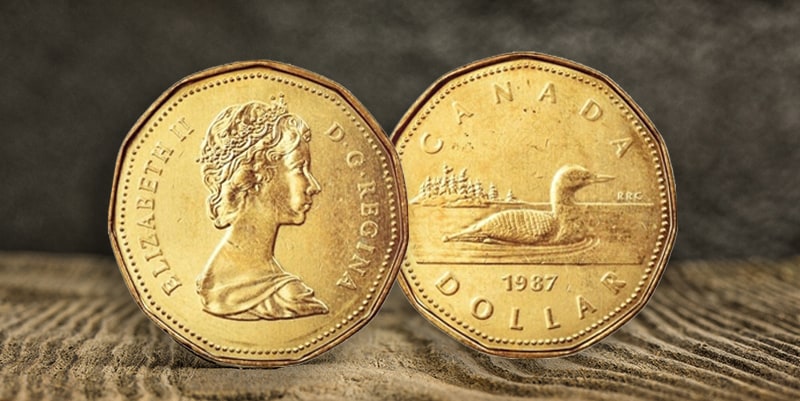
The Loon Dollar was introduced in 1987 to replace the one-dollar bill. The front of the coin shows a single loon bird in water, and on the reverse side is Queen Elizabeth. It has an interior of nickel and a coating of bronze or aureate. Nicknamed ‘The Loonie‘, this also came to be used to refer to the Canadian currency. At the time of its issue, the loon dollar faced public opposition, and as a result, not many first issue examples have been saved. It has also been issued in commemorative formats.
2007 Gold Kilo
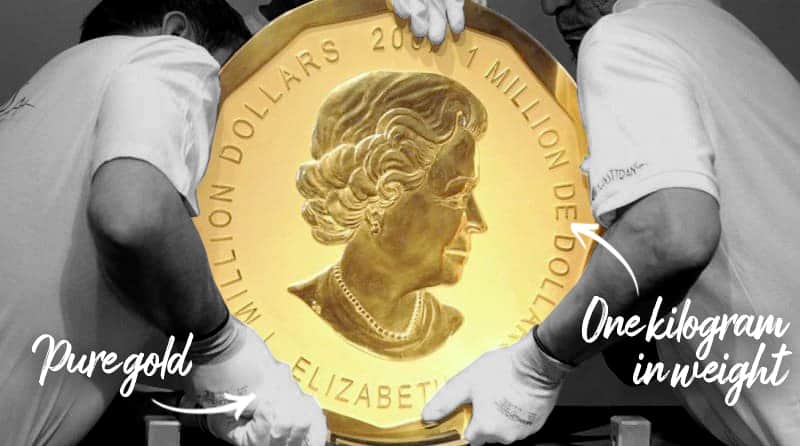
This coin of pure gold was introduced in 2007, ahead of the Vancouver Winter Olympic Games in 2010. It is one kilogram in weight, and it has a gold purity of 99.99 percent. Two designs have been featured: Early Canada and Towards Confederation.
They both celebrate the country’s diverse national heritage and geography, climate and nature. The pieces are the size of a CD, so the designs are more intricate and realistic. Only 20 of this gold kilo piece has ever been minted. They use special effects, including holograms and a piece shaped like a Canadian maple. In the same year, the golden Canadian million-dollar coin was produced with a weight of 100kg.
Basic terminology
| Edge | The perimeter of a piece, which is often seen as its third side. These can be serrated (reeding) or plain. |
| Field | he part of the face that is a flat background. Here is where engravers strike the relief of pictures. |
| Finish | The appearance of a coin as a result of minting and use. It can be ‘circulating’, ‘uncirculated and ‘proof’. |
| Obverse | The front face of a coin which usually depicts a national symbol, such as the head of a monarch or historical figure. |
| Relief | The three-dimensional imagery that is raised from the background of the field. This shows the figures, numbers, letters and pictures. |
| Reverse | The side of a piece that is referred to as ‘tails’, where a chosen design is usually depicted. |
| Structure | This refers to the material composition of a coin. For example, nickel, copper, gold, and the various coatings. |
Popular types of Canadian coins in collections
Gold, silver, nickel, steel collectible coins
The Royal Canadian Mint produces commemorative and other collector items. These often consist of precious metals, and they are improved using unique technologies. These include embedded crystals, enamelling, holograms and lasering. The operations receive profits from the collectors’ items. But otherwise, the Canadian mint only serves the interest of the public.
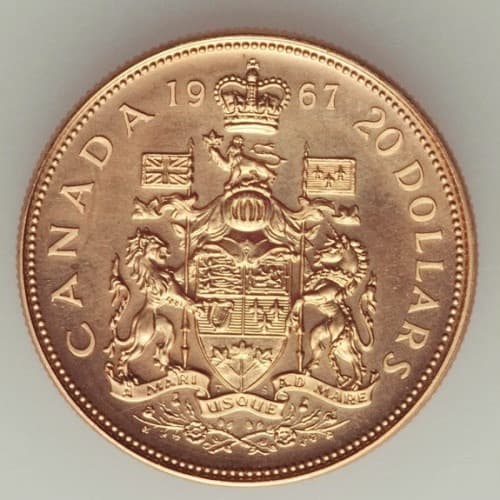
Canada has not struck many gold coins, except for $5 and $10 pieces from 1912 to 1914. In 1967, a 20-dollar gold specimen (SP) was introduced in commemoration of one century of the confederation. 334,288 of these exclusive specimen presentation sets were sold, and they are now worth their bullion value.
Canadian silver dollars have been issued in specimens, proof and brilliant uncirculated (BUNC) forms. Specimen pieces may contain half silver and half copper, while proof and BUNC forms contain up to 99.99 percent silver content. This increases their weight. Each has had a unique design to commemorate a province, event, organization or symbol of national significance. These have included the 1978 Commonwealth Games, Henry Kelsey, The Stanley Cup or Canadian maples.
25-cent nickel pieces were issued in 1999 and 2000 as brilliant uncirculated collector pieces. Two of these were part of the 1999 set to celebrate the millennium. The ‘Celebration‘ piece was part of a millennium series to celebrate the Candian flag. The Celebration piece is the highest in the value of these collector items.
The mint issued 25-cent collector pieces made of steel in the twenty-first century. These are both specimen and brilliant uncirculated coins. These have taken various designs, such as Canada Day, leading hockey teams and Sasquatch. These unique items are quite frequent, and 22 were issued in 2007. Up to 100,000 have been sold for each different design.
Small Coins
The Canadian one-cent piece is commonly referred to as the ‘penny‘. This is a result of the British monetary system’s use until 1858, which used pounds, shillings, and pence. In Britain, the name ‘penny’ refers to one penny. In Canada, it was originally used for the two-cent piece. But after this was discontinued the name began to be used for the one-cent piece.
Production and distribution of the Canadian penny ended in 2012, though it is still legal tender in Canada. Penny pieces are unlikely to be high in Canadian coin values unless they are dated before 1940. Those from the 1850s and some from the 1920s are the most popular.
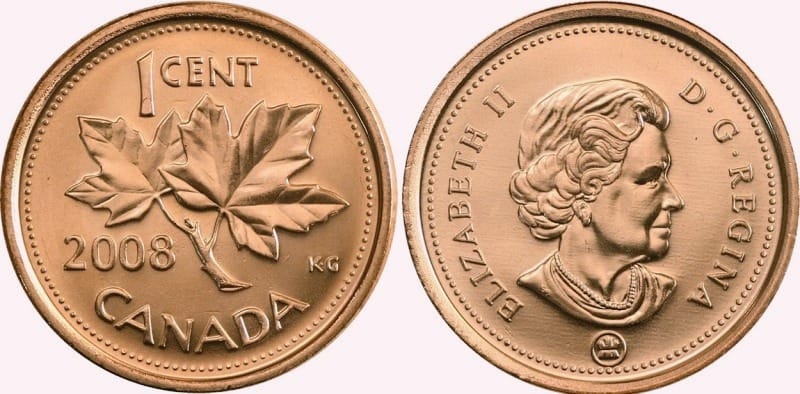
From 1841 to 1867, the Province of Canada consisted of modern-day Ontario and Quebec provinces. In 1858, British money was replaced with a new Canadian currency. In 1867 the colonies became known as the Dominion of Canada. From 1858 coins were minted in Britain, but from 1870 Dominion of Canada, coins were minted in Ottawa.
5 and 10 Canadian cents have both been issued from 1858 until the present. The 20-cent is rare as it appeared only in 1858. It was unpopular as people confused it with the US 25-cent piece. 25-cent and 50-cent items have been issued since 1870. As with the 1-cent, 5-cent and 10-cent, these have seen numerous versions. There have also been five different British monarchs in this period, which has changed their appearance.
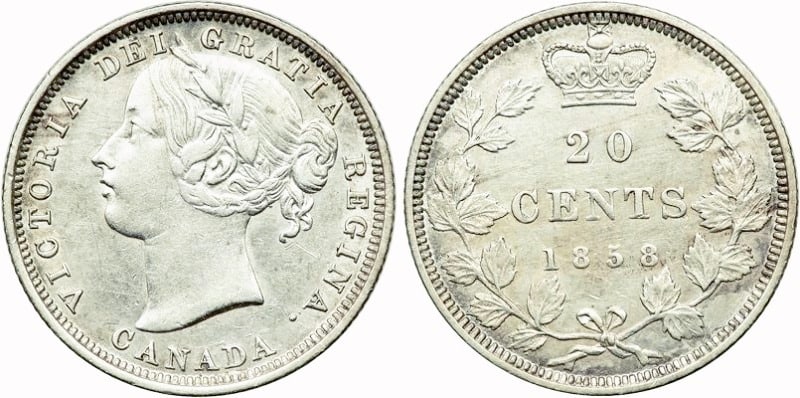
Valuation of Canadian coins
Grading shows the Canadian coin values in terms of quality and wear. The Sheldon Scale of grading shows quality using numbers and codes, such as MS (mint state and VG (very good). The following production errors can lower the value of a piece.
| Die crack | Cracks are in the relief of the surface when the die used also has a crack. Lighter cracks are superficial while deeper cracks are pronounced. |
| Die chip | Small pieces of metal that are not part of the drawing. They are caused by fragments or debris during the strike. |
| Extra metal | Bits of extra metal on the reverse may be due to grains missing from the rimming that stayed on the collar. |
| Die clash | Marks on a die through clashing on coins minted from the die. This happens when there are no blanks between an active press. |
| Mortar set | Extra parts of relief similar to die chips, especially seen on letters and numbers. These occur when there is metal fatigue in the die. |
| Deteriorated die | A doubling of relief features with a rough, less defined surface. This happens when a die is deteriorating. |
| Die shift | Doubling may be seen on letters, numbers or relief. This is caused when a die is twisted horizontally at the time of a strike. |
| Deficient plating | In the plating process before a strike, a thin chemical layer may be left on the blank. This will leave relief less defined. |
| Filled die | Features such as letters or numbers are missing. This is due to elements like oils or dust present during a strike. |
| Cuds | This starts on the rim and is a growth or swelling of relief. It is caused by a part of the die that is completely broken. |
Tips for the care and storage of valuable Canadian coins
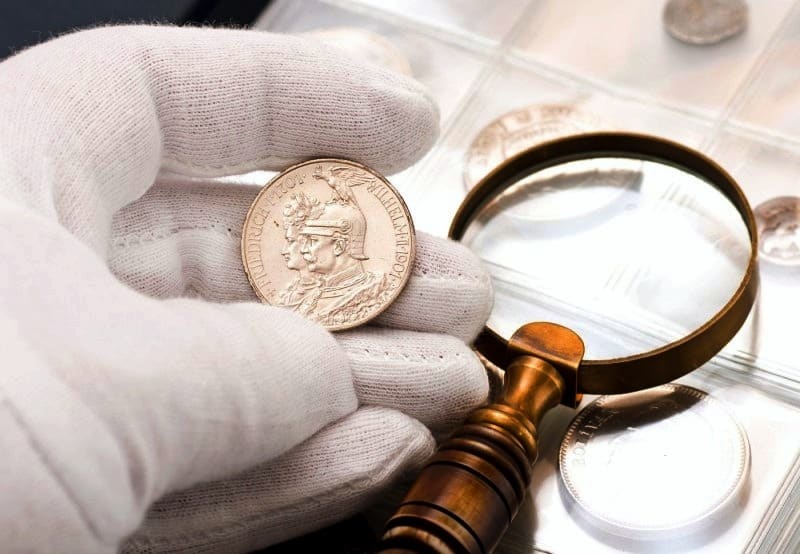
- Keep your collection in an environment that is dark, dry and temperature controlled. This will prevent or reduce harmful oxidation and tarnishing processes.
- Always use gloves made of cotton when handling your currency possessions. This will prevent dirt and skin oils from damaging their value and finish. Do not use plastic gloves as these may also cause damage.
- Contain your coins in albums or holders made from cardboard. Be sure to store them in products that do not contain PVC or harmful chemicals. These may contaminate metals.
- Handle your pieces from the edges using a thumb and forefinger. Avoid touching the reverse or obverse face. Place a towel under items as you handle them.
- Do not try to clean your items unless you have special training in this. Attempting to clean items can affect their finish and value.
- Always keep your collection in a bank vault or home safe to maintain the highest levels of security.
FAQ
Rare Canadian coins are those with few known examples and particular features that make them unique. The single rarest item is thought to be the 1911 Silver Dollar, as there are only two known examples. Other rare Canadian coins include the 1936 One-Cent Dot, with only three known examples.
Certain 50-cent pieces are valuable, but this depends on the year, type and condition. For example, an About Uncirculated (AU-50) 1921 50-cent piece may be worth $84,900. This is because there are fewer than 200 examples. Most twentieth-century pieces are of a value less than $100, while some dated before 1900 may be worth up to $1,000. There are also some rare Canadian dimes and nickels.
The five-cent piece is a ‘nickel’, the 10-cent piece is a ‘dime’, and the 25-cent piece is a ‘quarter’. The one-cent piece is the Canadian ‘penny’ though this has been discontinued. The one-dollar piece is a ‘loonie’, and the two-dollar piece is often called ‘toonie’ as a derivation of this.
Queen Elizabeth II first appeared on Canadian coins in 1953, after her ascension to the throne in 1952. She is the fifth monarch of the United Kingdom and the Commonwealth to appear on Canadian currency. There have been four different effigies of the queen used since 1953.
This has been an introduction to unique collectible items of Canadian currency. With some basic knowledge, it is possible to understand and practice this exciting subject. Canadian money has changed throughout its history, and this shows in its coins. For an enjoyable new pastime, try becoming a Candian coin collector.
